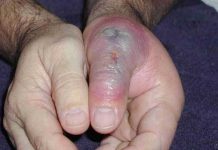Does your child have a weight problem? These tips can help your child reach and maintain a healthier weight.
Childhood obesity: understanding the problem
As a parent, few things are cuter than your full-cheeked baby or the chubby knees of your toddler. For some children, however, that adorable baby fat may turn into a health concern.
Today, nearly 1 out of 4 children and teens in developed countries are overweight or obese. Those extra pounds put kids at risk for developing serious health problems, including diabetes, heart disease, and asthma. Childhood obesity also takes an emotional toll. Overweight children often have trouble keeping up with other kids and joining in sports and activities. Other kids may tease and exclude them, leading to low self-esteem, negative body image, and even depression.
If you’re watching your child struggle with their weight, you may feel alone or helpless; in reality, you are neither. There’s plenty you can do to help your kids. Diagnosing weight problems and obesity in children as early as possible can reduce their risk of developing serious medical conditions as they get older. And by getting the whole family involved, you can break the cycle of weight problems and obesity, boost your children’s physical and mental health, and help them establish a healthy relationship with food that will last a lifetime. Whatever your children’s weight, let them know that you love them and that all you want to do is help them be healthy and happy.
Is your child overweight?
Children grow at different rates at different times, so it is not always easy to tell if a child is overweight. Body mass index (BMI) uses height and weight measurements to estimate how much body fat a child has. However, while BMI is usually a good indicator, it is NOT a perfect measure of body fat and can even be misleading at times when children are experiencing periods of rapid growth.
If your child registers a high BMI-for-age measurement, your health care provider may need to perform further assessments and screenings to determine if excess fat is a problem.
Causes of weight problems and obesity in children
Understanding how children become overweight in the first place is an important step toward breaking the cycle. Most cases of childhood obesity are caused by eating too much and exercising too little. Children need enough food to support healthy growth and development. But when they take in more calories than they burn throughout the day, the result is weight gain.
Causes of weight problems in children may include:
- Busy families cooking at home less and eating out more.
- Easy access to cheap, high-calorie fast food and junk food.
- Bigger food portions, both in restaurants and at home.
- Kids consuming huge amounts of sugar in sweetened drinks and hidden in an array of foods.
- Kids spending less time actively playing outside, and more time watching TV, playing video games,and sitting at the computer.
- Many schools eliminating or cutting back their physical education programs.
To combat weight problems, get the whole family involved
Healthy habits start at home. The best way to fight or prevent childhood obesity and weight problems is to get the whole family on a healthier track. Making better food choices and becoming more active will benefit everyone, regardless of weight.
You can also make a huge impact on your children’s health by getting involved with the details of their lives. Spending time with your kids—talking about their day, playing, reading, cooking—can supply them with the self-esteem boost they may need to make positive changes.
Don’t go no fat, go good fat
Not all fats contribute to weight gain. So instead of trying to cut out fat from your child’s diet, focus on replacing unhealthy fats with healthy fats.
Avoid trans fats that are dangerous to your child’s health. Try to eliminate or cut back on commercially-baked goods packaged snack foods, fried foods, and anything with “partially hydrogenated” oil in the ingredients, even if it claims to be trans fat-free.
Add more healthy fats that can help a child control blood sugar and avoid diabetes. Unsaturated or “good” fats include avocados, olive oil, nuts, fatty fish, soy, tofu, flaxseed, Brussels sprouts, kale, and spinach.
Choose saturated fat wisely. The USDA recommends limiting saturated fat to 10 percent of your child’s daily calories. Focus on the source of saturated fats consumed: A glass of whole milk or natural cheese rather than a hot dog, donut, or pastry, for example, or grilled chicken or fish instead of fried chicken.




























